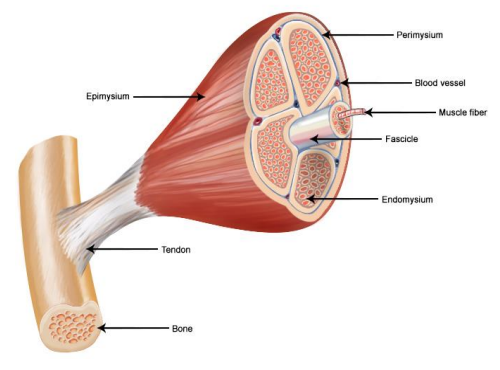W2 L2: Microbiology of meat & fish
Composition of meat:
- Most B vitamins in useful quantities
- Water activity (aw ): ~0.99
- Redox potential (Eh): mostly facultative anaerobic or anaerobic
- pH: 5.2 to 7 (~5.6)
- Slaughter procedures, hygiene interventions and the addition of hurdles is important for shelf life and safety
Production of meat
Farm→ transport→ Lairage→ slaughter→ dressing→ chilling→ cutting & boning → packaging or processing
- Maintains reserve of animals for processing so the abattoir can operate at a constant speed
- Dressing→ head, the legs below the knees, tail, skin and ,with the exception of kidneys, all the viscera are removed. Pigs de-haired, for poultry feathers are removed after scalding but the skin is left
Intrinsic bacteria
Commensal bacteria naturally present in muscular tissues and blood vessels

Extrinsic bacteria
- Faeces
- Hide contact
- Spilling of body fluids
- Aerosols and sprays
- Contaminated hands or equipment
- Abattoir workers
- Inappropriate preservation methods
Spoilage or pathogenic bacteria that contaminate meat during slaughter, processing and storage
Common meat spoilage bacteria
Facultative anaerobes
- LAB → natural gut microflora (Lactobacillus, Enterococcus, Pediococcus)
- Staphylococcus (hide)
- Shewanella (poultry)
Aerobes
- Pseudomonas
- Acinetobacter
- Moraxella
- Micrococcus
- Fungi & yeasts also contaminate the meat surface
Meat spoilage
Carbohydrates
- glycogen & glucose easily taken up by some bacteria producing organic acids - giving off sour flavour
Protein
- collagen, actin, myosin, myoglobin (Short peptides, amino acids, amines)
- Gram -ve aerobes Pseudomonas →Production of extracellular polysaccharides (EPS): slime → bitter/ putrid
Lipids
Aldehydes Ketones Short-chain fatty acids
Fruity Sweet

Preservation of meat
- freezing
- Canning (clostridia)
- modified atmosphere packaging → LAB
- vacuum packing → LAB
- Aerobic chill storage → Pseudomonas, Listeria monocytogenes
- Fermented meats → LAB
- cured meats → LAB
Lactic Acid Bacteria (LAB)
- Lactobacillus
- Enterococcus
- Pediococcus
Fish consumption
- Seafood is a generic term to cover all commercial fish & shellfish
- Fish
- Round white fish: cod, haddock, whiting
- Flat white fish: plaice, halibut
- Fatty fish: herring, mackerel
- Freshwater/Seawater fish: trout, salmon
- Sharks and rays: dogfish, skates
- Crustaceae → lobsters, crabs, shrimps, prawns
- Molluscs → mussels, oysters, clams
microflora of fresh fish
Skin ~ 103 – 105 cfu/cm2
Gills ~ 103 – 104 cfu/g
Intestines ~ 103 – 109 cfu/g
Lower counts on fish from clean, cold waters
Higher counts on fish from tropical, sub-tropical and polluted waters
But more psychrotrophs on fish from cold waters
Most bacteria are Gram -ve
Important genera→ Pseudomonas, Acinetobacter, Aeromonas, Shewanella, Vibrio, Flavobacterium & Cytophaga
Spoilage of fresh fish vs fresh meat
- Like meat fish is nutritious & thus perishable, so spoilage will begin immediately after death
- pH is higher, so pH is less restrictive to bacteria
- There is less carbohydrates as glycogen is used by fish during catching, so protein/AAs are used by bacteria earlier on → results in more putrid volatiles
- In cold water fish → higher proportion of psychrotrophs that multiply during chill storage, accounting for > 80% of the spoilage population
Microbial spoilage in fish
- Indole production→ spoilage bacteria convert tryptophan into indole, which has an intense faecal odour
- Formation of ammonia→ spoilage bacteria deaminate free AAs to release ammonia
- Even worse in sharks & rays as they contain high levels of urea that can also be converted into ammonia
- Formation of TMA→ spoilage bacteria convert trimethylamine N-oxide (TMAO) & odourless osmolyte - into the foul smelling Trimethylamine (TMA)
Preservation of fish
- Cooked products
- Canned fish→ Clostridia
- Vacuum packed
- Marinated fish
- Smoked fish
- Fermented fish - Baltic sea herring → Halanaerobium sp (High pH, high salt concentration, acetic acid, formic acid)
- Dried
- Frozen products - Anisakis
Fish borne disease
- Vibrio cholerae
- Vibrio parahaemolyticus
- Vibrio vulnificus
- Enteric viruses (Norovirus)
- Scombroid fish poisoning→ If fish such as mackerel, tuna, bonito are not chilled properly after being caught → bacteria begin to convert histidine into histamine
- Shellfish poisoning→ bivalve molluscs are filter feeders ∴ accumulate toxins produced by microscopic algae & cyanobacteria
Considerations of Bivalve molluscs
Particular problems:
- Filter feeders → conc. pathogens & toxins
- Grow in inshore & perhaps sewage-polluted waters
- Freq. eaten raw or lightly cooked
- Freq. consumed whole (w/ gut)
- Scallops are safer: offshore, less polluted waters, eviscerated and cooked
Conclusions:
- Bacteria are naturally present in meat & fish
- The predominant natural bacteria found in meat are Gram +ve, facultative anaerobes (LAB)
- The most abundant natural bacteria present in fish are Gram -ve aerobes
- Natural bacteria are involved in spoilage & fermentation (also disease)
- Spoilage bacteria & pathogens contaminate meat & fish
- Most pathogens are controlled by heating